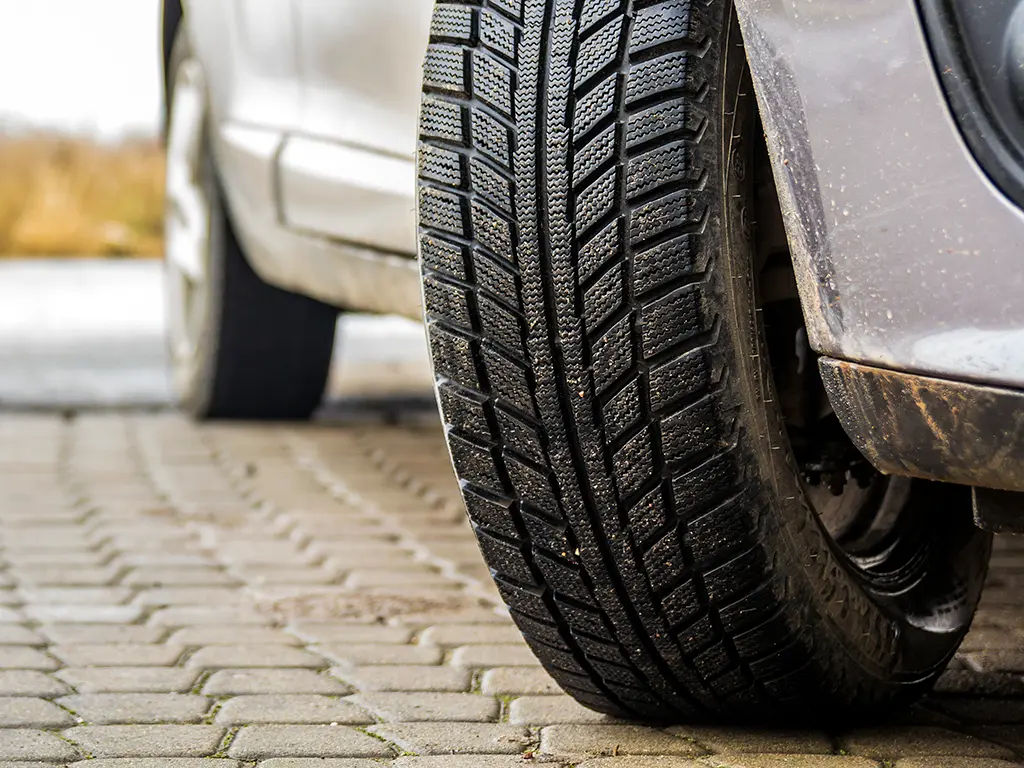Tyre Glossary
All Season Tyres
All Season Tyres, also known as all-weather tyres, are tyres that have been designed to provide performance and safety all year round. Due to their adaptability they are ideal for motorists who do not wish to change their tyres seasonally, however, they cannot offer the same performance standard in seasonal conditions as dedicated summer or winter tyres.
Aquaplaning
Aquaplaning is the term given to a loss of traction between the tyre and the road due to a layer of water. A combination of water and speed can lead to aquaplaning and it can cause the driver to lose control of their vehicle. Ensuring tyre tread remains above 3mm, tyres are properly inflated and driving cautiously in wet conditions can help to safeguard against aquaplaning.
Bead
The bead is an essential part of a tyre; it is a steel ring which holds the tyre to the rim of the wheel. When the tyre is correctly inflated the air pressure within the tyre keeps the bead in a groove or small slot in the wheel.
Block
Tyre blocks are rubber shapes in the tyre tread which help to make up the tread pattern. Blocks work with other tread elements to provide safety and performance.
Comfort
Comfort relates to a tyre’s ability to absorb shocks from the road so that they are not felt by the driver and passengers.
Compound
The compound is the mixture of materials used to construct tyre tread. The compound of a tyre will usually include rubber and carbon, however, the ratio of these and other raw materials will differ depending upon the intended purpose of the tyre.
Dry Grip
A tyre’s ability to grip the road in dry conditions. This is important as a tyre with good dry grip will provide shorter braking distances and better steering precision on dry surfaces.
Footprint
The footprint, otherwise known as contact patch, of the tyre is the area of the tread which retains contact with the surface of the road. This area is responsible for maintaining grip and traction.
Grooves
The spaces between blocks on the tyre tread are known as grooves and these are usually optimised by the tyre manufacturer to provide grip and/or aquaplaning resistance.
Handling
A tyre’s handling refers to how it responds to steering and braking and is affected by factors including the tread pattern of the tyre and its compound. Having good handling properties is essential to your safety and performance on the road.
Load Index
The load index of a tyre can be found in the vehicle handbook or printed on the tyre sidewall and it relates to the maximum weight that the tyre can carry when travelling at its maximum speed.
M&S Marking
Tyres that have been given an M&S Marking are classified as Mud and Snow tyres and are approved for driving in conditions such as mud and snow. This marking is displayed as a mountain and snowflake symbol which is usually located on the tyre sidewall.
Performance
The performance of a tyre relates to its traction, grip, acceleration, braking and handling properties.
Rolling Resistance
Rolling resistance is created by friction and is the force that works against the direction that the tyres are rolling in. Tyres require more energy, and in turn more fuel, to work against rolling resistance. Many tyre manufacturers offer an energy saving tyre range which includes tyres that have been designed to lower rolling resistance for a more economical drive.
Run-Flat Tyres
Designed with thicker and reinforced sidewalls, run-flat tyres enable a tyre to retain the shape of the tyre following damage on the road for a short period. The purpose of this is to enable drivers to safely travel home or to a garage following a puncture or other tyre damage.
Shoulder
The shoulder is the name for the area of the tyre where the sidewall meets the tread.
Sidewall
The tyre sidewall is the rubber on the tyre’s side that protects it from damage such as kerbing. This area is located between the shoulder and bead of the tyre and has important information printed on it called tyre sidewall markings.
Sipes
Sipes are narrow slits on the tyre tread which work to provide better grip and enable the tyre to retain contact with the surface of the road in wet conditions.
Speed Rating
A tyre’s speed rating indicates the maximum speed that a tyre can run at when carrying maximum weight. This figure is specified by the vehicle manufacturer and can be found on the sidewall of the tyre.
Summer Tyres
Summer Tyres are tyres that have been constructed with a compound and tread pattern optimised to provide performance and safety when temperatures are above 7°c.
Tread
The tread is the external rubber covering of the tyre which retains contact with the road. The tyre tread will have been designed with a specific tread pattern by the manufacturer for a specific purpose and may be optimised for wet grip, winter safety or sports performance. When you purchase new tyres you should choose tyres with a tread pattern that matches your requirements.
Wet Grip
A tyre’s ability to grip the road in wet conditions. This is important as a tyre with good wet grip will provide shorter braking distances and better steering precision on wet surfaces.
Winter Tyres
Winter Tyres are tyres that have been constructed with a compound and tread pattern optimised to provide performance and safety when temperatures are below 7°c and there is snow or ice on the road.


